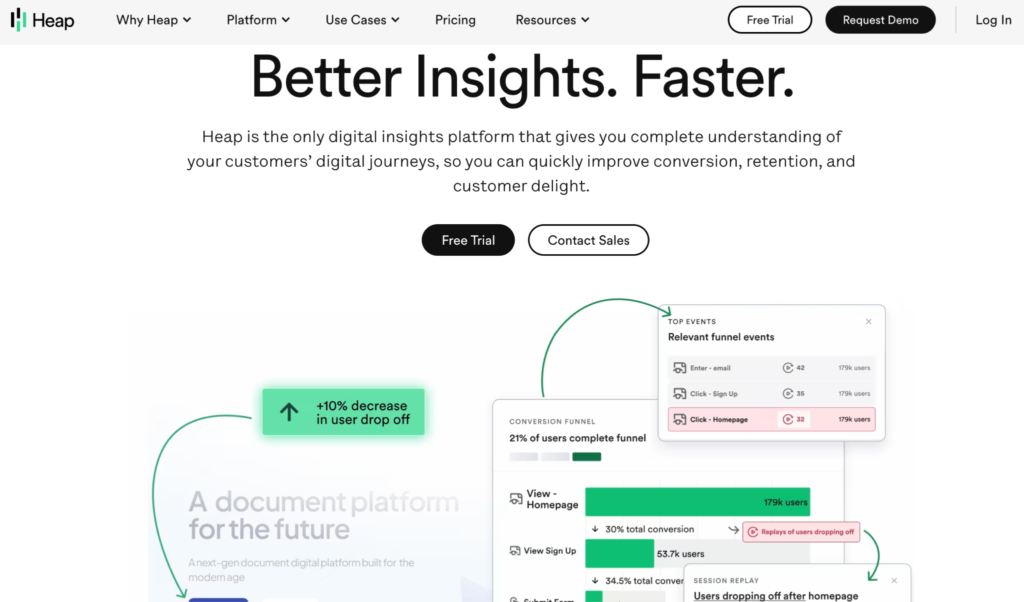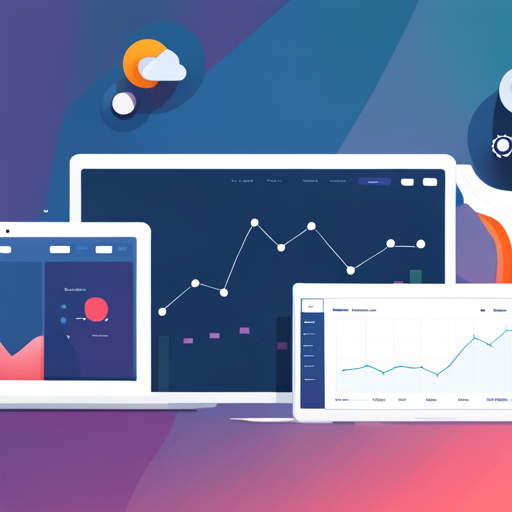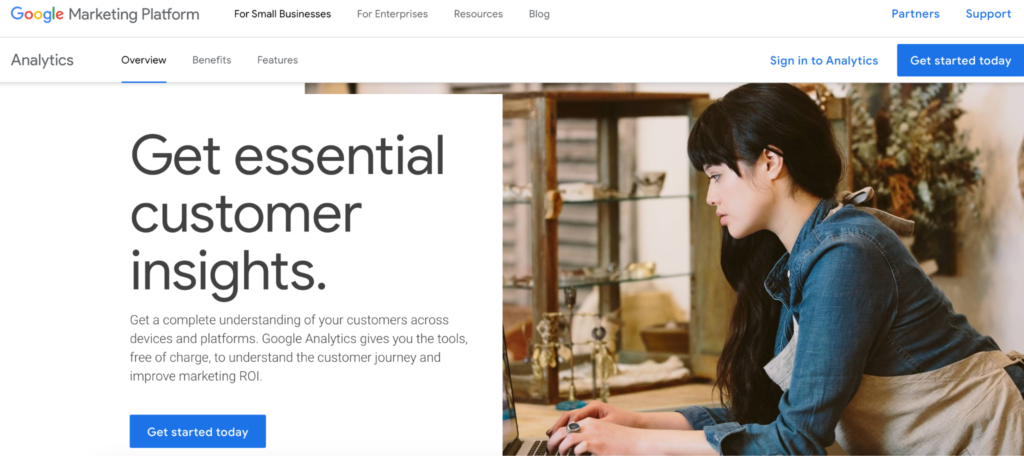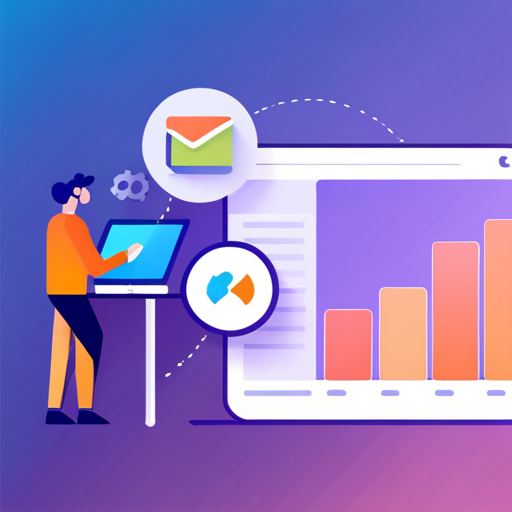In an age where data drives decision-making, selecting the right product analytics tool can be a game-changer. Heap and Google Analytics, two giants in this space, offer comprehensive insights that help businesses understand, engage, and retain users. But the question remains: Which platform truly reigns supreme in product analytics? 📊
This post delves into a side-by-side comparison of their features, ease of use, and cost-effectiveness, aiming to provide a clear winner in this digital duel. Prepare for an analytical showdown as we seek to settle the Heap vs Google Analytics debate once and for all. 💥
What is Heap software?

Heap is a product analytics platform that automates data collection and analysis. 📊 Unlike traditional tools, Heap captures all user interactions without manual event tracking. Here’s what sets Heap apart: ✨

- Automatic Event Tracking: Heap tracks every click, swipe, form submission, and pageview without requiring any manual coding. If your product has a new feature or change, you don’t have to worry about setting up new tracking codes.
- Retroactive Analysis: The platform allows you to analyze past data retroactively. Suppose you decide to track a new event today. Heap will apply this tracking to your historical data, enabling you to analyze trends or patterns from the past.
- User-Centric Approach: Heap provides user-level insights, giving a holistic view of your users’ journey. It helps understand individual user behavior, enhancing user engagement and retention.
- Flexible Data Analysis: With Heap, you can segment your data, create funnels, and generate reports, all in a user-friendly interface. It aids in deriving actionable insights and making data-driven decisions.

Heap software empowers businesses to leverage data analytics to its fullest potential, offering a comprehensive view of user behavior without the complexities of manual event tracking. 📊💪
What is Google Analytics?
Google Analytics (GA) is a popular web analytics service that measures website or app performance. With Google Analytics, you gain deep insights into your audience’s behavior, enabling you to make well-informed decisions and improve user experience. Here are the key aspects that set Google Analytics apart: 📊👥💡

- Extensive Data Collection: Google Analytics collects vast data on your website’s visitors. For example, it tracks users’ location, devices, visited pages, time spent on the site, and more. This detailed data enables you to better understand your audience, optimize your content, and boost your conversion rates.
- Integration with Google’s Marketing Ecosystem: One major advantage of Google Analytics is its seamless integration with other Google products, such as Google Ads and Google Search Console. It allows for a cohesive marketing strategy where you can track your ad performance, understand your SEO, and analyze your website data all in one place.
- Customizable Reporting: Google Analytics offers customizable reports that give you the flexibility to analyze your data in the way that makes the most sense for your business. You can create dashboards with specific metrics that matter to you and generate reports to analyze trends over time.
- Goal Tracking and Conversion Funnels: One of the standout features of Google Analytics is the ability to set goals and track conversions. Whether it’s a completed purchase, a newsletter sign-up, or a downloaded eBook, Google Analytics lets you track these actions to understand your conversion paths better.
Google Analytics is a versatile tool that offers robust and customizable data analysis, making it a staple in digital marketing and web analytics. It provides valuable insights that can propel your business toward data-driven growth. 🔍💻📈
Heap vs Google Analytics: A Detailed Comparison

Regarding product analytics, heap vs google analytics have unique strengths and weaknesses. 💪📊
Let’s delve into a detailed comparison of these two powerhouses, discussing their key advantages and challenges across five factors: data collection 📈, integration 🔄, customization 🛠️, real-time reporting ⏱️, and cost 💰.
Data Collection
- Heap: One of Heap’s strongest selling points is its automatic data collection. The platform captures every single user interaction on your website or application, eliminating the need for manual event tracking. This feature allows businesses to focus more on data analysis than data collection.
- Google Analytics: While Google Analytics also provides a wealth of data, it requires manual setup for event tracking. However, the depth of data that Google Analytics provides, like geographic location, devices used, and pages visited, is hard to match.
Integration
- Heap: Heap offers integration with popular tools like Optimizely, Salesforce, and Marketo. However, its ecosystem might not be as extensive as Google Analytics.
- Google Analytics: One of the major strengths of Google Analytics is its seamless integration with the Google ecosystem, including Google Ads and Google Search Console. It makes it an integral part of a connected marketing strategy.
Customization
- Heap: Heap provides flexible data analysis options, allowing businesses to segment data, create funnels, and generate custom reports.
- Google Analytics: Google Analytics also shines in the area of customization, allowing you to create dashboards with specific metrics and generate custom reports.
Real-Time Reporting
- Heap: Heap offers real-time reporting, enabling businesses to quickly respond to changing user behavior patterns.
- Google Analytics: Google Analytics also provides real-time analytics, enabling businesses to monitor their website’s performance.
Cost
- Heap: Heap’s pricing is based on the number of sessions and can become costly as your user base grows. A free tier is available with limited features and premium plans for advanced needs.
- Google Analytics: Google Analytics offers a free version sufficient for many small businesses, while its premium version, Google Analytics 360, comes at a higher price point but provides advanced features and capabilities.
Heap vs Google Analytics: Pricing Comparison

Here’s an in-depth breakdown:
Heap Pricing:
Heap offers a tiered pricing structure, with the cost directly proportional to the number of sessions. They haven’t disclosed specific prices on their website, as they prefer tailoring a plan to fit your unique requirements. Heap’s pricing tiers are:
- Free Tier: The free version of Heap offers basic data capture and analysis features and can be a good starting point for smaller businesses or startups.
- Enterprise Tier: Heap offers an Enterprise plan for larger businesses with more extensive needs. This plan provides advanced features such as additional user roles, data governance, and premium support.
Google Analytics Pricing:
Google Analytics, on the other hand, offers both a free and premium version:
- Free Version: Google Analytics provides a free tool that offers comprehensive web analytics, sufficient for many small to medium businesses. Basic data analysis and reporting enable businesses to understand user behavior and improve their strategy.
- Google Analytics 360 (Premium): For larger enterprises with more complex needs, Google Analytics 360 is the premium version offering advanced analysis and collaboration features. The cost of Google Analytics 360 starts at $150,000 annually but can increase based on the required data and features.
Heap vs Google analytics: What to look for in a product analytics tool?
When selecting a product analytics tool, there are several key considerations to consider to ensure it fits your business needs and goals. Here’s what to look for: 🔍📊

Data Collection & Management:
Your chosen tool should offer comprehensive data collection capabilities. It should automatically capture user interactions without much manual intervention. Additionally, it should provide a centralized system for managing and organizing this data. For example, Heap shines with its automatic data collection feature and organized data management.
Integration:
The tool should seamlessly integrate with other platforms your business utilizes. It would allow for easy data sharing and collaboration across different systems. Google Analytics, for example, offers excellent integration capabilities, especially within the Google ecosystem.
Customization:
Having a tool that allows for customization in data analysis and reporting. The ability to create custom dashboards and reports helps focus on metrics that matter the most for your business. Heap and Google Analytics offer this flexibility, allowing businesses to tailor their analytics approach.
Real-Time Reporting:
Real-time reporting capabilities are crucial in this fast-paced digital world. The tool should allow you to monitor user behavior and website performance in real-time. Heap and Google Analytics both offer real-time reporting features.
Cost-Efficiency:
While not compromising on features, the tool should be cost-effective and provide value for money. Google Analytics free version can be a great fit for small to medium businesses, while Heap’s pricing structure is more scalable, growing with your user base.
User-Friendly Interface:
The tool should be easy to navigate for all team members, not just those with advanced technical knowledge. A user-friendly interface eases the learning curve and improves data analysis and interpretation efficiency.
Reliable and Timely Support:
Lastly, the tool should offer reliable, timely support to solve any issues that may arise. It could come through technical support, tutorials, or community forums.

The ideal product analytics tool largely depends on your business’s requirements and available resources.
CONCLUSION
Heap and Google Analytics offer powerful product analytics tools to help businesses gain valuable insights into user behavior. Though similar, they differ in features, pricing, and target audience. When deciding between them, consider your business needs and goals to determine which tool best fits your requirements. 🤔
Be sure to evaluate crucial features like data accuracy, user-friendly interface, ease of integration, and customization options. Additionally, look into other resources such as customer support, training materials, documentation, tutorials, or community forums for help setting up your product analytics tool. 💡
With the right choice of tool in place, you can start collecting valuable insights into your users’ behaviors and make informed decisions about your product. Good luck! 🚀

10+ years experience in Marketing and Operations
